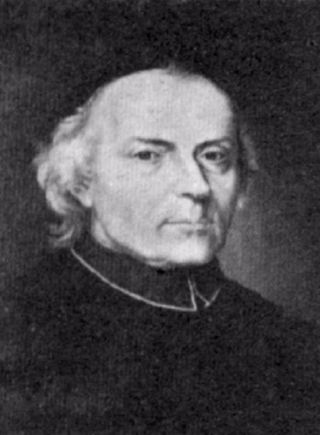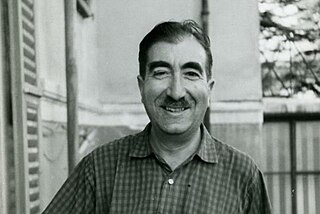
Lodovico Antonio Muratori was an Italian Catholic priest, notable as historian and a leading scholar of his age, and for his discovery of the Muratorian fragment, the earliest known list of New Testament books.

Scipione Ammirato was an Italian author, philosopher and historian who lived during the Renaissance. He is regarded as an important figure in the history of political thought.

Carlo Fea was an Italian archaeologist.

Abbé Gasparo Ferdinando Felice Fontana was an Italian polymath who contributed to experimental studies in physiology, toxicology, and physics. As a physicist he discovered the water gas shift reaction in 1780. He investigated the human eye and has also been credited with discovering the nucleolus of a cell. His work on the venom of vipers was among the earliest experimental toxicological studies. He served as a court physicist for Peter Leopold, Duke of Tuscany and taught at the University of Pisa. He was involved in the establishment of the La Specola museum in Florence.

Girolamo Tartarotti was an Italian abbot, Neo-Platonist, and writer, primarily famed for his works on witchcraft.

This timeline lists important events relevant to the life of the Italian diplomat, writer and political philosopher Niccolò di Bernardo dei Machiavelli (1469–1527).

Giovanni Targioni Tozzetti was an Italian botanist and naturalist.

Gianfranco Contini was an Italian academic and philologist.
Luca Pinelli was an Italian Jesuit and theologian.

Francesco Cattani da Diacceto, often referred to as Francesco Cattani da Diacceto il Giovane in order to distinguish him from his grandfather, the philosopher Francesco di Zanobi Cattani da Diacceto (1466–1522), was Bishop of Fiesole from 1570 until his death in 1595 and author of several works including an Essamerone ("Hexameron") and a translation into vernacular Florentine Italian of the Hexaëmeron and De Officiis Clericorum of Saint Ambrose.
Isabella Cervoni was an Italian poet of the Counter-Reformation period, active between 1590 and 1600. She wrote encomiastic and polemical poems addressed to numerous secular and religious dignitaries of the Italian Renaissance, including Pope Clement VIII, Maria de' Medici, Christina of Lorraine and Henry IV of France. She was praised for her talent and ambition by Cristoforo Bronzini in his 1625 dialogue Della dignità delle donne, dialogo…settimana prima e giornata quarta as having "given the world many beautiful and spiritual compositions" despite her "most tender age."

Angelo Marchetti was an Italian mathematician and cosmographer from Pistoia.

Paolo Lioy was an Italian naturalist, redshirt patriot and politician.
Elisabetta Fiorini Mazzanti was an Italian botanist and writer. She was known for her work in bryology and algae. In scientific literature, she is referred to by the abbreviation Fior.-Mazz.
Guido de' Medici was a Roman Catholic prelate who served as Archbishop of Chieti (1528–1537) and Bishop of Venosa (1527–1528).
Giovanni Maria Lampredi was an Italian jurist, scholar, and writer, active in Tuscany. He is also remembered for his text on Etruscan culture.
Clemente Sibiliato or Sibilato was an Italian cleric, poet, and librarian.
Domenico Maria Manni was an Italian polymath, editor, and publisher.
Pietro Perreau was an Italian librarian and Hebraist.
Flaminio Torrigiani or Torrigiano was an Italian physician and anatomist.











